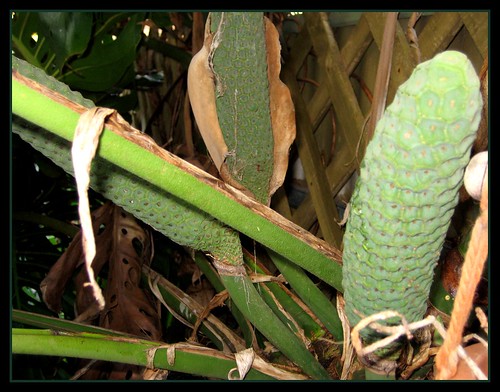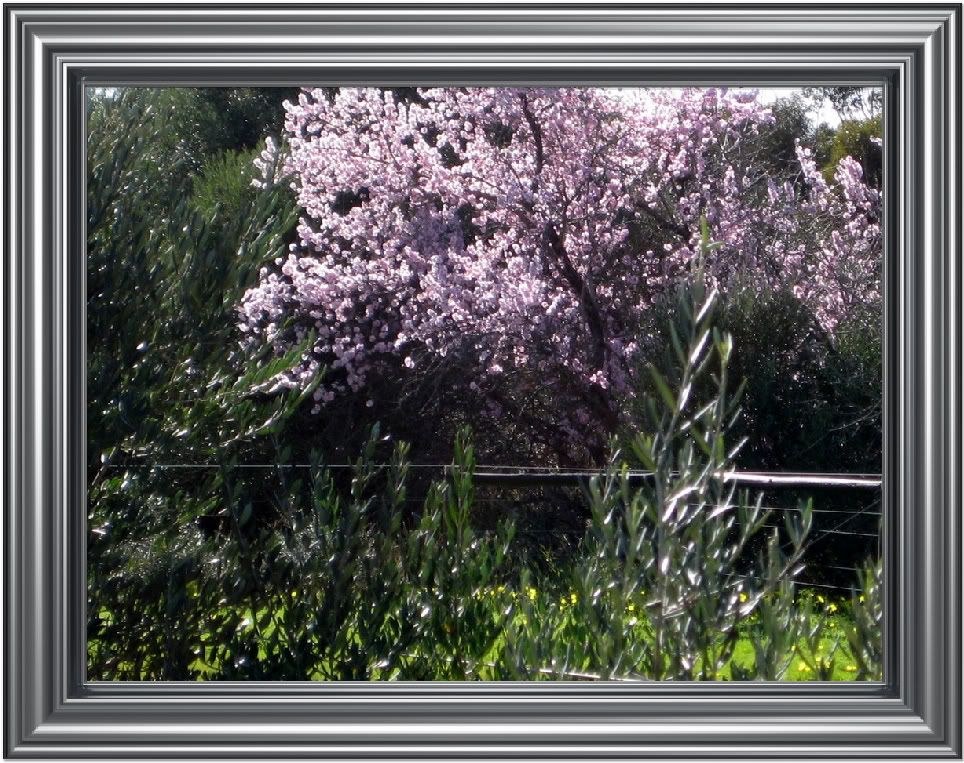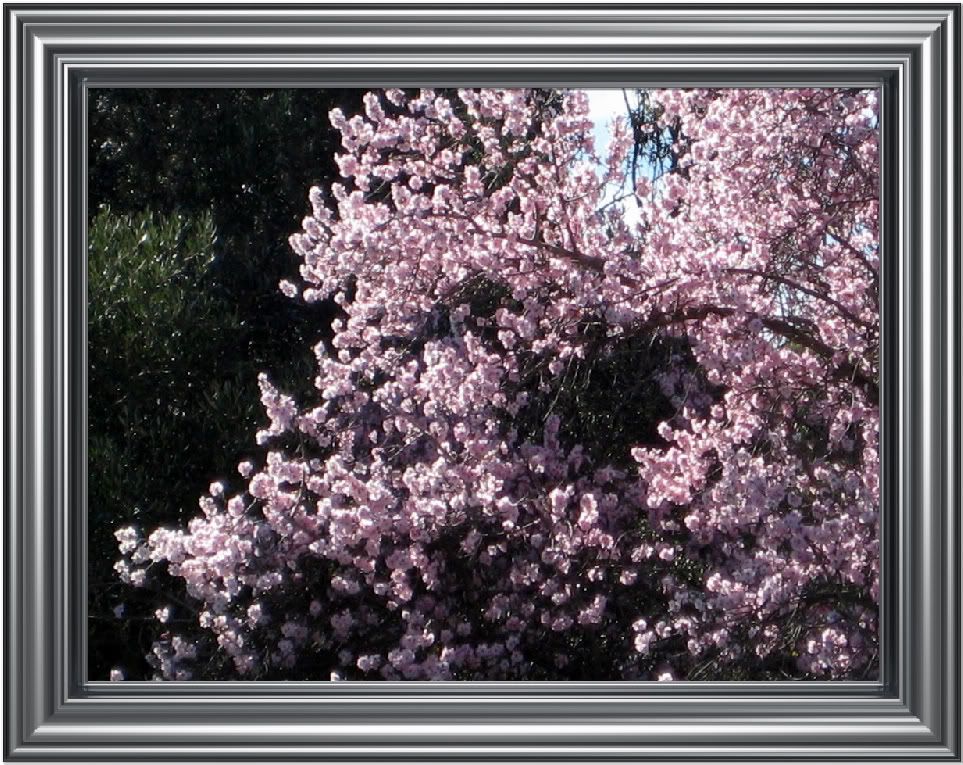Keith thanks for making this group happen and I hope it is not an imposition to start off with a discussion here?

Last week I ventured to the side of the house where in previous years the well shaded area was home to the shade loving plants and more fussy of my over grown house plants. I go out there from time to time and because I had camera in hand I thought I would snap a few photos of my Monstera Deliciosa which is quite mature and also now a very large plant. It produces fruit and I managed to snap a few photos of the healthy looking crop of fruit, sometimes referred to as, fruit salad plant fruit. It has never been sprayed and it lives a very primitive life but thrives and it has made it through a few droughts lately which makes me think it gets water from very deep down. I have a little bit of information here about the plant, courtesy of Wikipedia :

Monstera deliciosa (also called Ceriman, Swiss Cheese Plant, Fruit Salad Plant, Monster fruit, Monsterio Delicio, Monstereo, Mexican Breadfruit, Monstera, split-leaf philodendron, Locust and Wild Honey, Windowleaf
Click here for more information.
Click here too.
 Often called the Fruit Salad plant or the Swiss Cheese Plant as the ripened fruit has a pineapple-banana odour and fruit salad taste. The mature fruit has a yellow-green, violet-spotted rind of hexagonal plates covering a creamy-white, soft pulp. Highly ornamental, an excellent choice for heavily shaded positions.
Often called the Fruit Salad plant or the Swiss Cheese Plant as the ripened fruit has a pineapple-banana odour and fruit salad taste. The mature fruit has a yellow-green, violet-spotted rind of hexagonal plates covering a creamy-white, soft pulp. Highly ornamental, an excellent choice for heavily shaded positions.
More info here too from this Australian site.
Now my question for this group is.
Has anyone ever eaten the fruit of this plant?
I have never tried it and just leave the fruit on the plant and forget about it. I have read that it can be a bit tricky as far as eating the fruit goes because it must be fully ripe and I read that the fruits can take a year to ripen fully. So if you have any information and wish to share please do so. Most people who grow these plants start out with them as pot plants because of their lovely shiny green heart shaped leaves and for one of these plants to even think of fruiting, it takes at least four years and conditions must be fully met for that to happen.
Regards from Milli.






 and bits of old paving stones.
and bits of old paving stones. 
 Then you get some lawn clippings,, more wet shredded paper, compost and soil. Just enough to make like a 3cm layer on the bottom. Then you get some food scraps and put on top. This is food for the worms. The next part is the hard part. Finding worms. You can buy them, but I just went on a worm hunt around the garden
Then you get some lawn clippings,, more wet shredded paper, compost and soil. Just enough to make like a 3cm layer on the bottom. Then you get some food scraps and put on top. This is food for the worms. The next part is the hard part. Finding worms. You can buy them, but I just went on a worm hunt around the garden . Next place another tyre on top and when the compost is ready you remove the lower tyre and the put it back on top again.
. Next place another tyre on top and when the compost is ready you remove the lower tyre and the put it back on top again. 






 water and blanch the broccoli. I'm not giving amounts because I never measure things, LOL. Save this water to cook some pasta in. In a frying pan add some olive oil and chuck in some garlic cloves and and saute the broccoli in this for a few mins. Put the cooked and drained pasta in with the broccoli. You can add more salt and some pepper if you want. Stir around and once it's done you can add a sprinkle of grated cheese on top. An alternative to cheese, (poor mans cheese) is breadcrumbs sauted in a pan with Olive oil, garlic and salt until it becomes golden.
water and blanch the broccoli. I'm not giving amounts because I never measure things, LOL. Save this water to cook some pasta in. In a frying pan add some olive oil and chuck in some garlic cloves and and saute the broccoli in this for a few mins. Put the cooked and drained pasta in with the broccoli. You can add more salt and some pepper if you want. Stir around and once it's done you can add a sprinkle of grated cheese on top. An alternative to cheese, (poor mans cheese) is breadcrumbs sauted in a pan with Olive oil, garlic and salt until it becomes golden. 


 Often called the Fruit Salad plant or the Swiss Cheese Plant as the ripened fruit has a pineapple-banana odour and fruit salad taste. The mature fruit has a yellow-green, violet-spotted rind of hexagonal plates covering a creamy-white, soft pulp. Highly ornamental, an excellent choice for heavily shaded positions.
Often called the Fruit Salad plant or the Swiss Cheese Plant as the ripened fruit has a pineapple-banana odour and fruit salad taste. The mature fruit has a yellow-green, violet-spotted rind of hexagonal plates covering a creamy-white, soft pulp. Highly ornamental, an excellent choice for heavily shaded positions.


